AI (Artificial Intelligence) transcended as a mere ‘buzzword’ when organizations started using it to streamline business functions.
According to the IBM Global AI Adoption Index 2022, 44% of organizations are full steam ahead in embedding AI into their processes.
But where exactly does it happen?
This post will look at seven ways businesses use AI to enhance their operations.
Why use AI for business?
AI offers a ton of benefits for businesses:
- Maximize efficiency: AI can crunch through terabytes of data and generate outputs at a speed that humans can’t match. It can exponentially increase an organization’s operational efficiency in several areas—from customer service to marketing.
- Free up human resources: Most AI applications are designed to lighten the load of human workers. This allows businesses to allocate more workforce for other meaningful tasks.
- Reduce human error: Since AI depends on automated systems, the risk of human error is significantly reduced or removed. This can help businesses achieve consistent and reliable performance in areas like Quality Assurance (QA), cybersecurity, and risk management.
- Unlock business expansion opportunities: AI can unveil data streams that businesses never had access to before. Business leaders can use it to participate in submarkets and unlock new revenue streams.
- AI as a selling point: The word “AI” can have a positive effect when attached to product or service descriptions. It makes potential customers associate the brand with top-of-the-line technology and forward-thinking leadership.
1. Chatbots
Businesses use data analytics to engage and manage affiliate marketing prospects.
However, AI takes prospecting and sales to another level by gathering and organizing data and executing on the aggregated information.
Chatbots are a straightforward application of AI in customer-facing operations, particularly the branches of NLP (Neuro-Linguistic Programming) and ML (Machine Learning). This automated software can respond to user queries based on sentiment, behavior, and predictive analysis.
Take note that AI chatbots are more than glorified apps that send pre-built responses via keyword matching. Drift, for example, can help businesses create chatbots that can incorporate the customer’s tone, sentiment, and individual personalities into automated customer interactions.
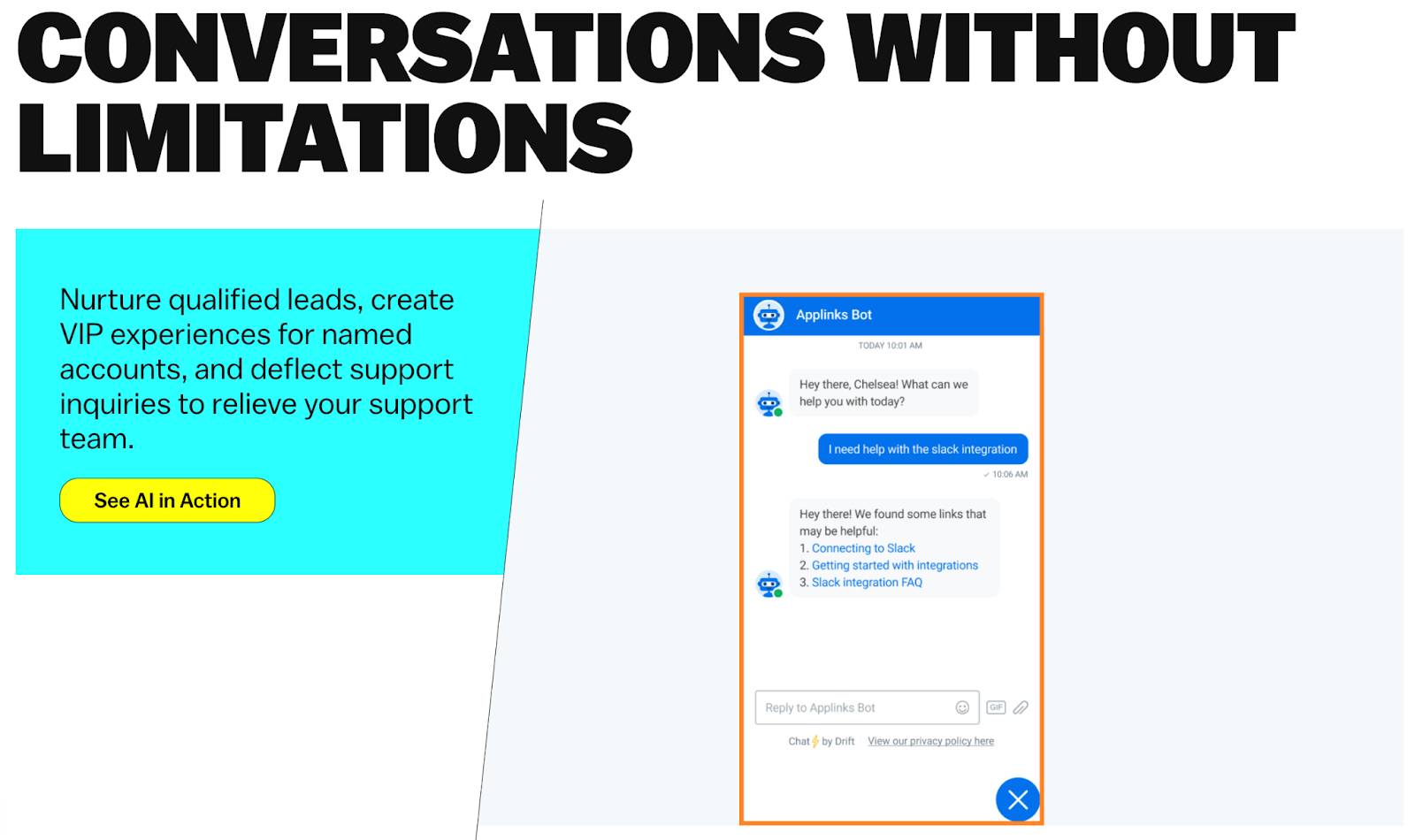
Image Source: Drift.com
AI-powered chatbots help businesses save time and human resources from customer support, onboarding and even lead nurturing.
Since they’re capable of going “off-script” and, in turn, delivering unpredictable experiences, they are wired to identify when it’s necessary to call on a live, human agent. This acts as the failsafe that effectively prevents AI from inadvertently causing negative experiences.
2. Customer Success
Customer success is the proactive planning and strategy-building around known customer challenges. This allows businesses to provide customers with immediate solutions and resources to help customers accomplish their goals.
State-of-the-art customer success platforms can leverage the power of AI to consolidate, manage, and analyze customer data to highlight business opportunities.
Involve.ai, for example, can tap into a company’s deep pool of customer data to identify opportunities to upsell, cross-sell, and re-engage customers at a high risk of churning.
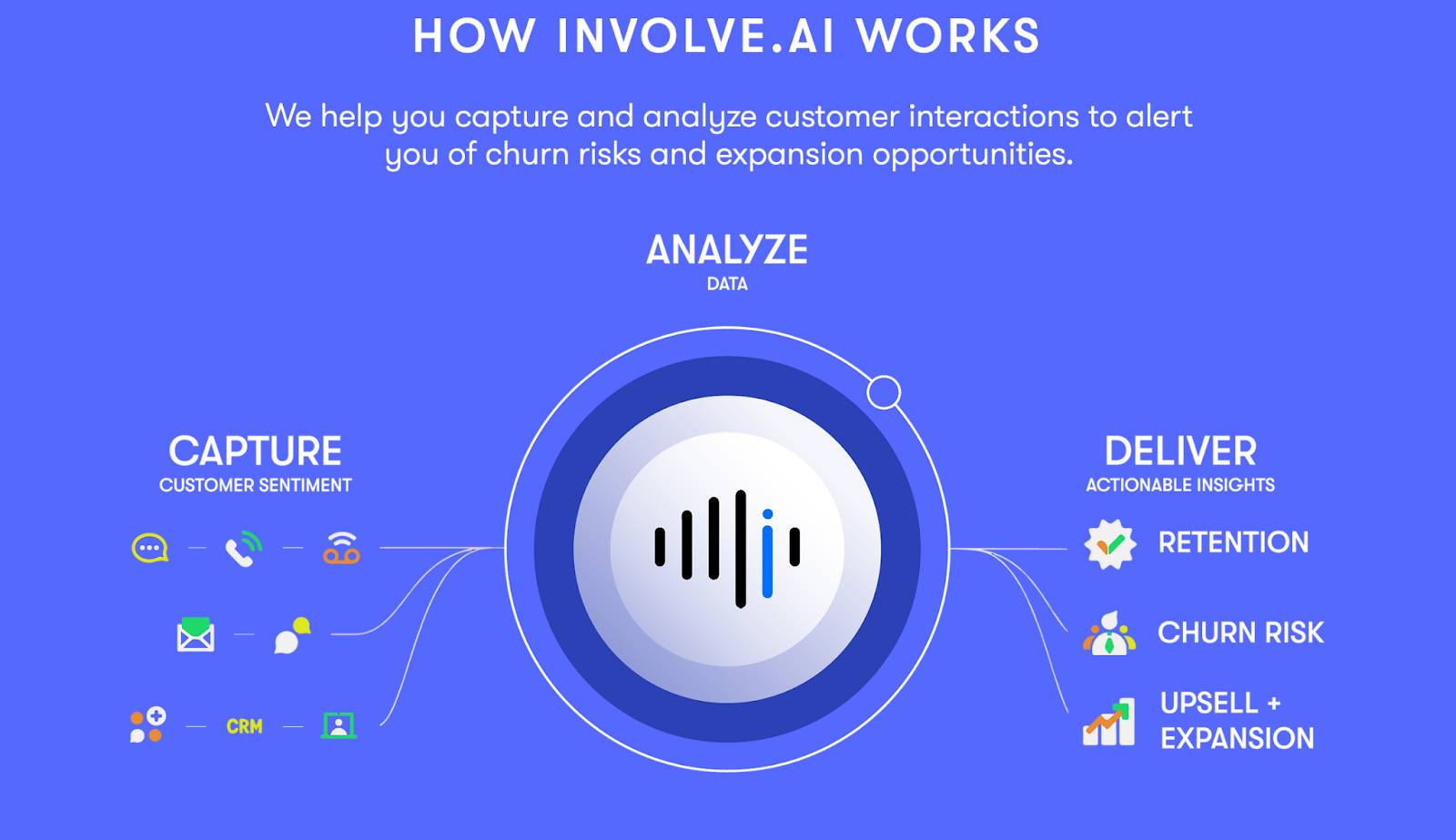
Image Source: involve.ai
With AI at the helm of an organization’s customer success initiatives, they take the guesswork out of the equation—ensuring scalable and sustainable profits.
3. Risk Management
Aside from customer success, risk management is a pillar that impacts a business’s longevity. It focuses on preparing mitigation workflows for all possible types of risk, including but not limited to financial, compliance, and cybersecurity.
With risk management software, organizations can intelligently identify, manage, and mitigate risks. They can also utilize AI to quickly spotlight significant risks and tailor remediation options based on available enterprise data.
A good example is MetricStream, which hands out AI-generated recommendations for GRC (Governance, Risk Management, and Compliance).
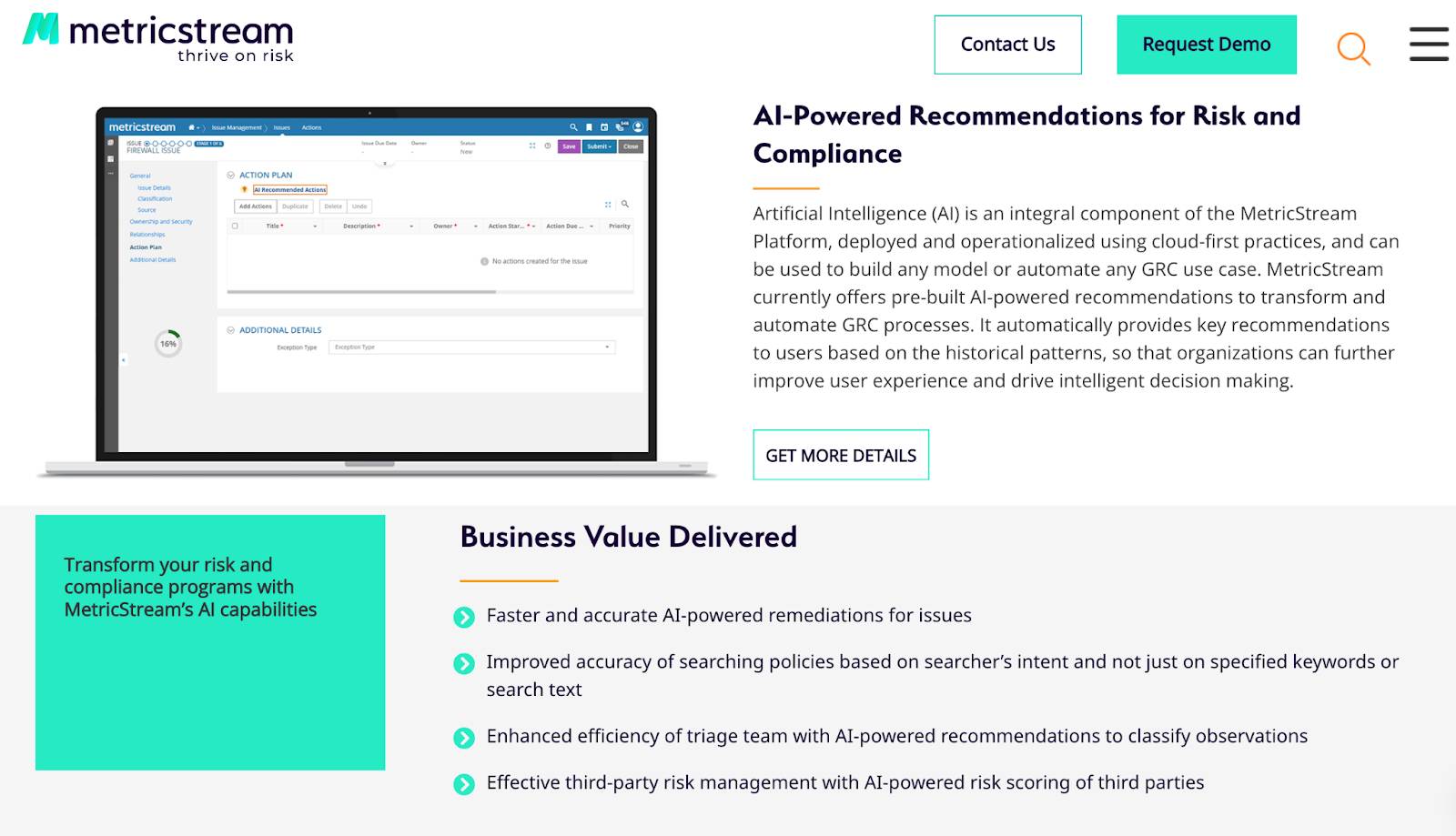
Image Source: MetricStream.com
4. Content Writing
I am taking an online business bank on an effective digital marketing strategy. This will communicate the brand’s values, unique selling points, and expertise to the online audience.
Most businesses build a digital marketing team from the ground up—training staff on what topics to cover, how to write amazing content, and where to publish them for maximum reach. And as AI takes the digital marketing world by storm, countless third parties developed automated solutions that augment all these aspects.
Jasper.ai is perhaps the most advanced and resembling “true AI” in this space. The correct configuration can help marketing teams write full-length content for social media, blogs, and online journals.
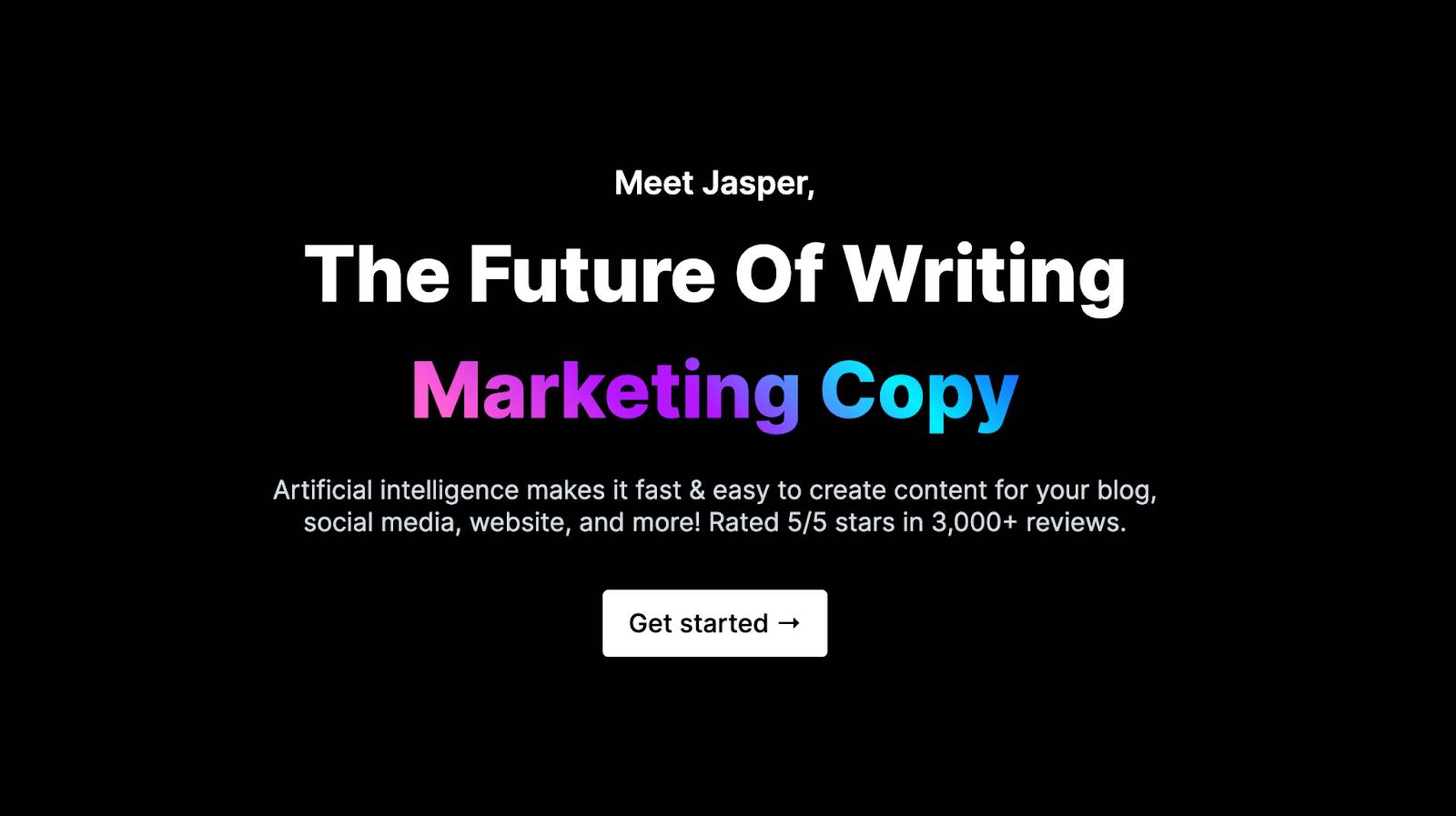
Image Source: Jasper.ai
While Jasper.ai can regularly produce pieces that look artificial, it can be inconsistent when creating complex content. The best way to use it is for social media interaction posts, paid ads, short blog posts, product listings, and other short-form, generic written content.
5. Web Development
Web development is another creative business area that is usually handled by human personnel. But that doesn’t mean AI is entirely out of the picture in building and optimizing websites.
AI can simplify web design and development by providing layout suggestions based on user preferences and competitor data. AI assistants can also automate coding processes, allowing developers to finish projects faster.
For instance, Microsoft’s Sketch2Code tool uses AI to generate HTML code from hand-drawn website designs. This kickstarts the assembly and coding phases of the web development life cycle.
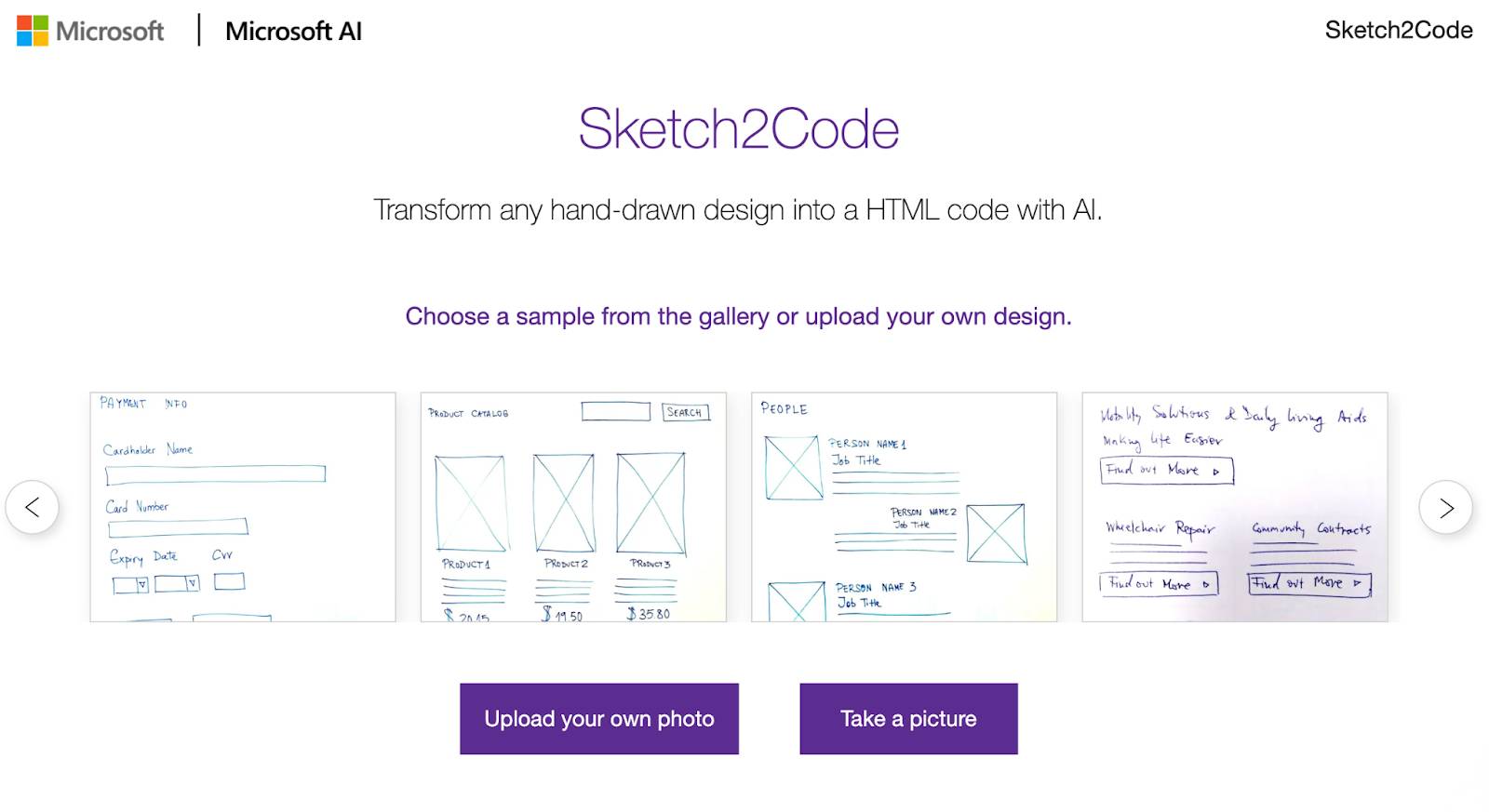
Image Source: Sketch2Code.AzureWebsites.net
Of course, human developers are still needed to ensure clean coding. They need to iron out the creases and trim the tool’s output to bolster performance and maintainability.
Human developers can also stay on top of the web development process by tracking the progress using reliable project roadmap software. The tool helps keep everything aligned and on track with the project’s objectives.
The good news is that AI tools can also help developers write clean code. A couple of famous examples are DeepCode and Sourcery.
Conclusion
Now is the best time to embrace AI if you want to future-proof your business. It will help you achieve a new level of efficiency without going through grueling amounts of research, data analysis, and brainstorming.
The list above describes how most businesses can use AI to streamline essential processes today. But that’s just the tip of the iceberg.
There are countless other AI-powered solutions for business functions in various industries. Go beyond the use cases presented above and do your research to reap the full benefits of AI technology.
Tech Trends
Related posts
Leave a Reply Cancel reply
Hot Topics
Categories
- Ads (5)
- Animes (25)
- Artificial Intelligence (AI) (35)
- Augmented Reality (AR) (10)
- Automotive (9)
- Bitcoin (16)
- Blockchain (24)
- Business (244)
- Business Intelligence (3)
- Cloud Computing (23)
- Computer (128)
- Concrete Technology (1)
- Cryptocurrency (10)
- Cybersecurity (42)
- Data Science (9)
- Database (4)
- DevOps (6)
- Digital Marketing (76)
- Digital Workplace (14)
- Ecommerce (1)
- Education (28)
- Electric Vehicle (EV) (1)
- Electronics & Hardware (17)
- Entertainment (42)
- Fabrication (3)
- FAQ's (1)
- Finance & Marketing (47)
- Gadgets (35)
- Games (8)
- Gear (29)
- HTTPS (1)
- Industry (46)
- Information Technology (90)
- Internet (413)
- Internet of Things (IoT) (41)
- Job (25)
- Machine Learning (6)
- Marketing (92)
- Mobile Apps (21)
- Movies (11)
- Natural Language Processing (6)
- News & Trends (109)
- Programming (4)
- Science & Technology (235)
- Security (81)
- SEO (56)
- Services (36)
- Social Media (73)
- Software (99)
- Sports (1)
- Technology (306)
- Telecom (6)
- TikTok (5)
- Tours & Travels (9)
- Uncategorized (11)
- Virtual Reality (VR) (7)
- VoIP (4)
- Web Technology (42)
- Workforce (17)
- Workspace (6)



Stay connected